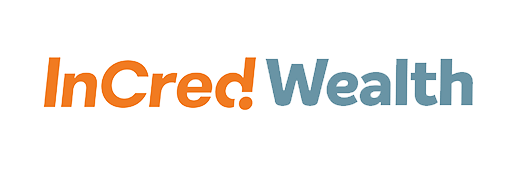High Frequency Indicators Tilt Towards Green, But Economy Not Out of the Woods Yet
By InCred November 7, 2020
The COVID 19 pandemic, which gripped the world since the beginning of 2020, has wreaked the best laid plans and forecasts of businesses. The months-long lockdown, which affected businesses and jobs, in turn spread gloom over global economies too.
According to projections made by the International Monetary Fund (IMF), the global GDP is expected to decline by 4.4% YOY in 2020 while India’s GDP is set for a decline of 10% YOY. In the release of its World Economic Outlook October 2020 report, the IMF projects a slide of -5.8 percentage points from its June projection.
However, the worst seems to be behind us, at least for India:
- Declining COVID Cases: Not considering the second wave of COVID19 outbreak, with declining cases of the infection and deaths in the country, it means a confidence booster for the businesses as well as the economy.
- Festival Season: With the festival season upon us, there are reports of retail sales in various sectors like automobile and electronics picking up, with the consumer goods industry registering double-digit growth.
- Uptick in High Frequency Indicators: Moreover, there seems to be a glimmer of hope for India if we look at some of the High Frequency Indicators for the month of October ’20.
Let us take a more detailed view of the High Frequency Indicators for the month of October and understand their significance in predicting sentiment & economic performance.
OCTOBER CONTINUED TO SEE SHARP RECOVERY ACROSS SELECT HIGH FREQUENCY INDICATORS.
While the GDP is used to evaluate a country’s economy, given the lag in GDP data, analysts track certain other key datapoints called High Frequency Indictors that reflect the sentiment and output in various segments of the economy.
High Frequency Indicators cover the performance of key sectors related to consumption, industry, capex, etc. Some examples of this include steel production, cement production, cargo handled at major ports, production and sales of commercial vehicles and passenger vehicles, railway freight traffic, non-oil imports, exports of commodities like tobacco, textile, jewellery, etc, broadband subscriber base, tourist arrivals through domestic airlines, bank’s non-food credit, rupee vs dollar, Purchasing Managers’ Index (PMI) composite—an indicator of business activity, both in the manufacturing and services sectors—and insurance premium, to name a few.
The High Frequency Indicators released in September & October ’20 indicate a quick recovery and have exhibited a surprisingly sharper uptick compared to the trend observed till August ‘20.
- The E-way bills generated, which were down -3.5% YOY in August, saw a sharp recovery with a very strong 21.4% YOY growth in October.
- GST Collection which was down -12% in August turned positive with 10.2% YOY growth in October touching pre-COVID levels.
- Post lockdown, electricity consumption turned positive for the first time too with 4.6% YOY growth in September and 12.1% YOY growth in October against a 2% YOY decline in August.
- Wholesale vehicles sales, particularly tractors, 2Ws and PVs have been encouraging too.
- A similar momentum has been reflected in manufacturing PMI with a strong level of 58.9 in October.
THERE’S STILL A LONG WAY TO GO FOR A FULL RECOVERY
While these datapoints present a welcome move, the Indian economy is still not out of the woods. While the bright spots are encouraging, not all is well yet.
- The services segment, for instance, is expected to continue to see challenges in the light of social distancing requirements.
- Imports continued to be down by 12% YOY in October 2020 as well, indicating a still weak demand in economy.
- As for vehicle registration and petroleum products, the consumption of both were down 26% YOY in October ’20, indicating that the retail pick-up along CV (Commercial Vehicle) space (indicator of industrial activity) remains weak.
As we stand today, sustainability over the next few months seems crucial. All eyes are now on the festive season demand hoping for it to see a sustained uptick.
Given the current scenario, we continue to expect growth to return Q4 onwards with recovery continuing through Q3-FY21. Having said that, on a positive note, we expect complete normalisation from FY22 onwards, especially as and when the vaccine is approved and is made widely available!
Read More
December 04, 2024
Unlock the potential of unlisted and Pre-IPO equities with insights and discover how early investments in companies like Tata Technologies and Nazara Technologies can yield significant value, along with the risks to consider.
September 04, 2024
Value investing focuses on buying stocks that are undervalued by the market. Investors analyze a company’s fundamentals, aiming to buy at a discount and hold until the stock reaches its true worth.
June 21, 2024
Investment Strategies 101 provides an overview of various approaches to growing wealth, from value investing to growth and income strategies. Each method suits different goals and risk tolerance levels, helping investors make informed decisions.
April 05, 2024
The private market offers unique investment opportunities with high potential returns, but its complexity and lack of transparency make it difficult to navigate. This combination of high reward and mystery draws sophisticated investors.
Share


